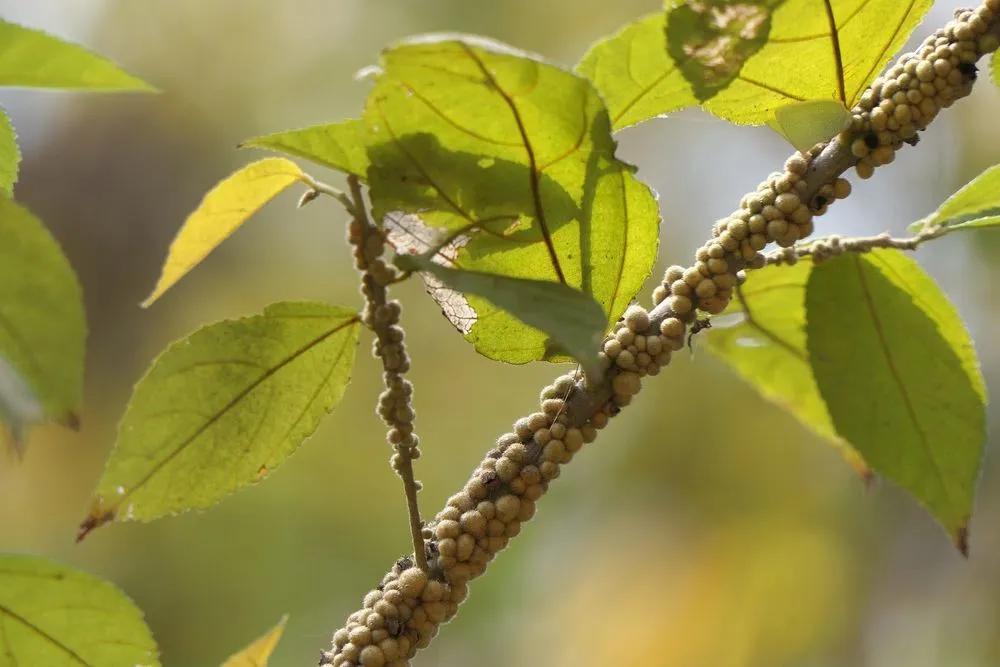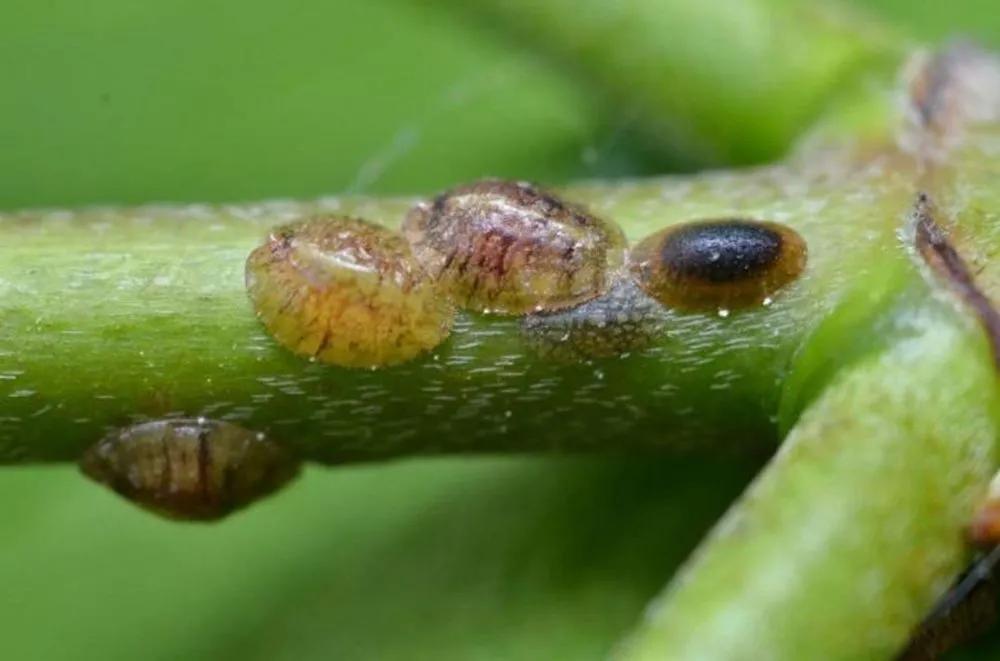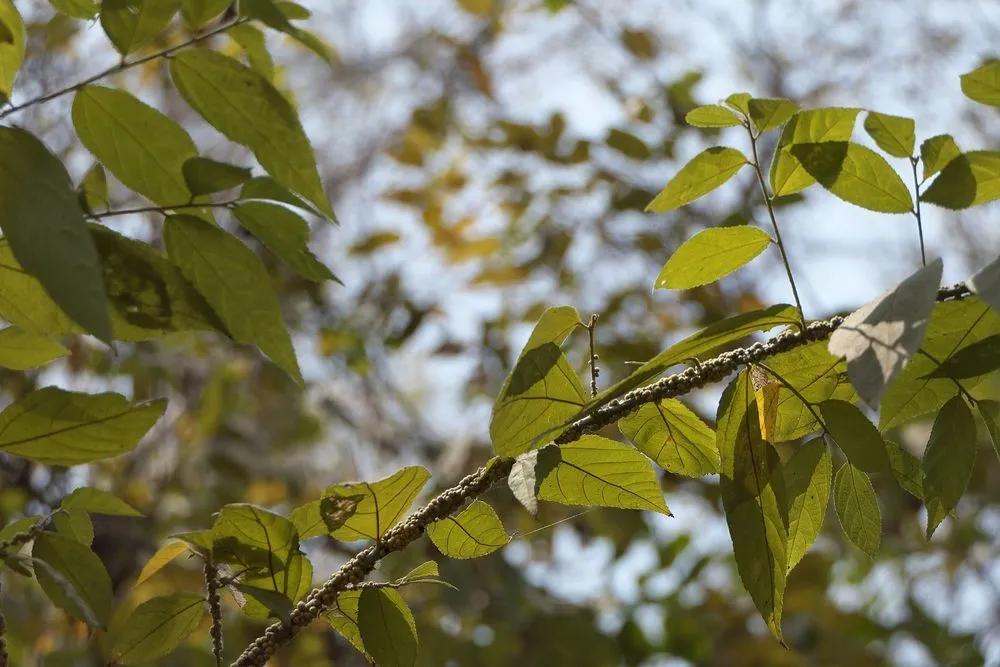Coccoidea is a superfamily of insects that comprises many species with variable appearances. They are commonly known as scale insects, a name that also engulfs the entire infraorder Coccomorpha, comprising around 8000 known species. These insects are herbivores that pierce plant tissue with their sharp mouthparts and feed on sap. Some species are considered serious crop pests and display a wide range of hosts, such as eucalyptus, citrus, magnolias, and other woody plants, as well as fungus and ornamental plants. Different species require different environmental and weather conditions, and they can’t survive long without a host. They tend to be immobile as they find a host and cling onto it, and exude a fluid where mold tends to grow. These insects are hard to control since their waxy scales protect them from insecticides, but they have several natural enemies, including parasitoid wasps and predatory beetles like ladybugs.
Coccoidea



Signs of damage
- Clusters of scales. These will appear on twigs, stems, branches, and leaves undersides. They resemble shell-like bumps and vary in color, shape, and size.
- Leaf chlorosis.
- Deformed leaves.
- Brown marks.
- Sooty mold. A black-colored fungus will grow where scale insects release their fluids.
- Stunted growth and reduced vigor.
- Death from weakness.
How to prevent
Plants should be regularly inspected. When insects are found, rule other similar insects out, such as aphids and mealybugs. These can also harm plants but should be handled differently. If there are low numbers of scales and the infection is in the beginning, these can be picked by hand or by rubbing alcohol on them.
Always quarantine new or suspected plants for at least three weeks. Always get rid of infected material.
Heal
There are several treatments for this issue, as long as the damage hasn’t gotten irreversible. Since insecticides tend not to work due to these insects’ protective waxy scales, control can be done through horticultural oils, as these suffocate them. Pesticides that poison the sap can also be employed, as well as insecticidal soap. The presence of natural enemies is also beneficial.
Go Premium to continue reading
Also you’ll get unlimited access to disease identification and all the other beneficial features
More problems
